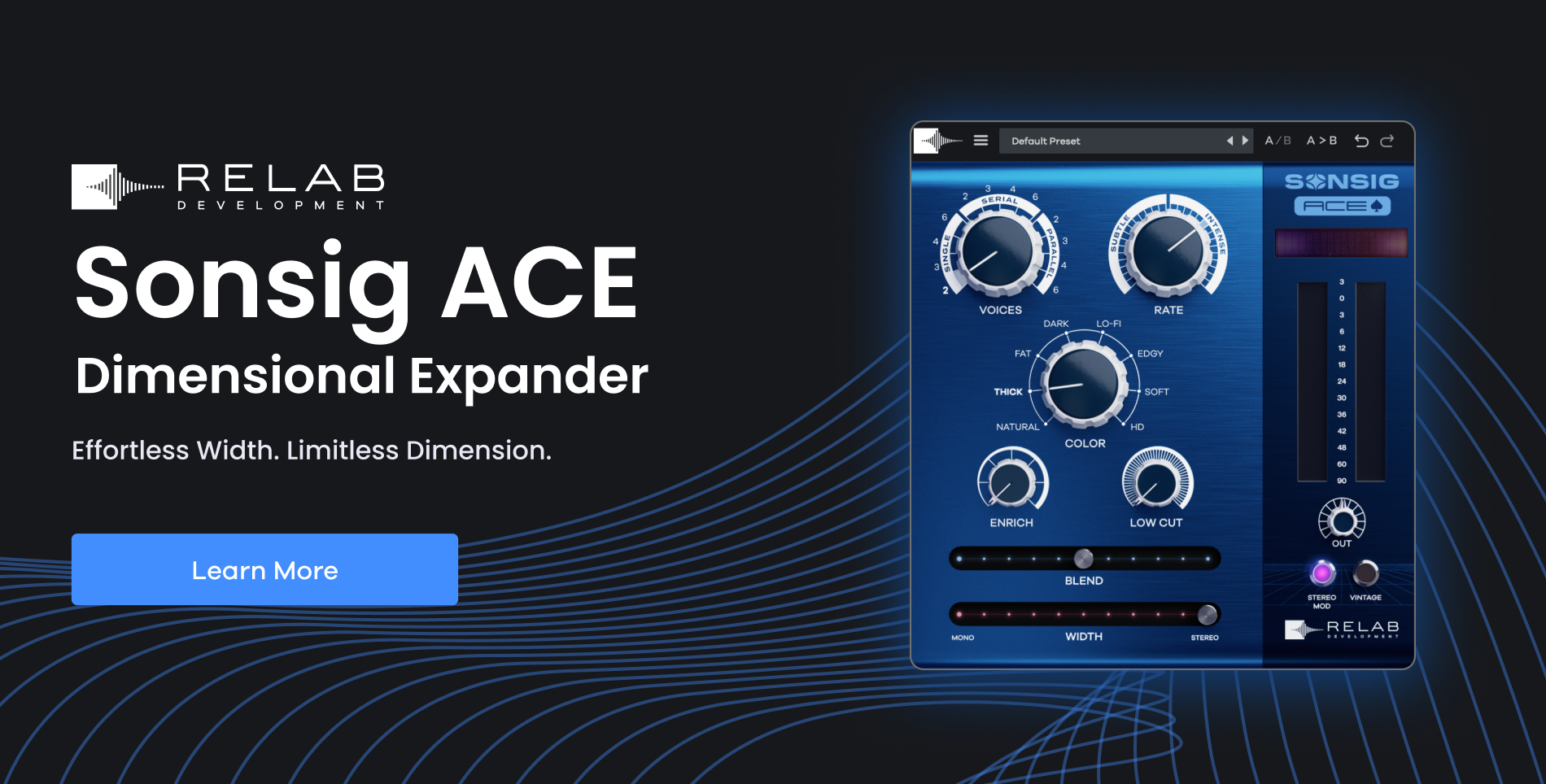As a mix engineer or producer, you’re constantly searching for new ways to add dimension, depth, and a unique sonic imprint to your mixes.
These lofty goals are what led to the design and development of our exciting new plug-in, the Sonsig ACE Dimensional Expander, with its powerful new feature: Color control.
Color control lets you meticulously shape the tonal character of the plug-in’s modulation effects in many different ways.
And although Sonsig ACE is in no way a hardware emulation, it does draw inspiration from the filtering characteristics and analog-to-digital (A/D), digital-to-analog (D/A) conversion found in classic hardware, giving you the best of both worlds, right at your fingertips.
What exactly is color control?
Sonsig ACE’s Color control transcends simple EQ adjustments. It features eight carefully crafted modes that emulate the highly sought-after tonal qualities of the world’s most revered hardware units:
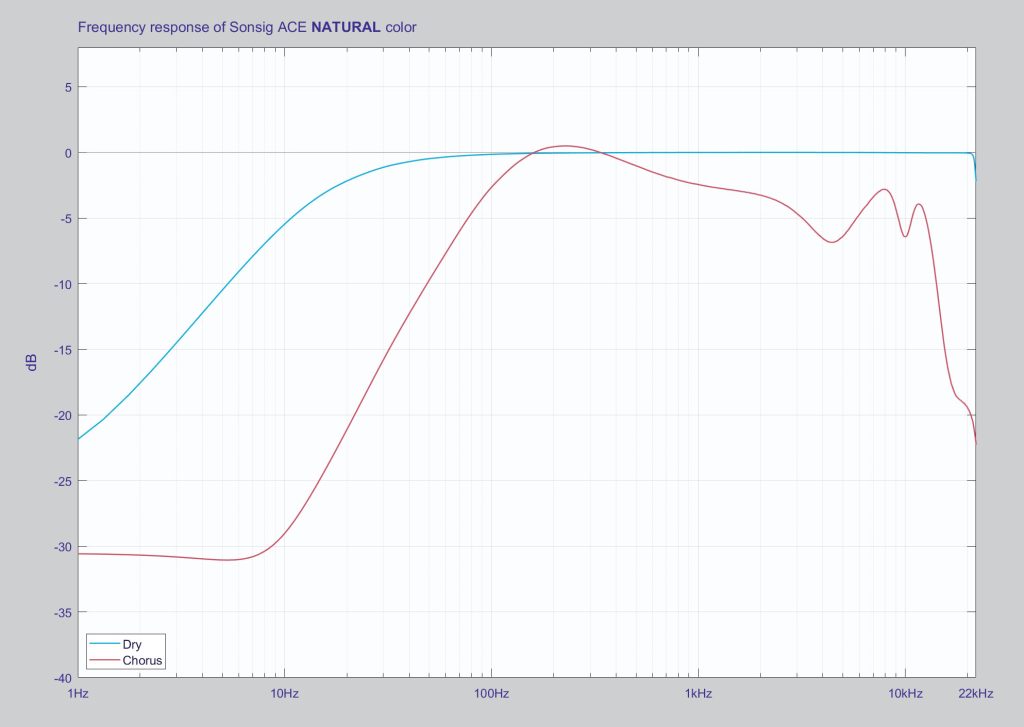
Natural
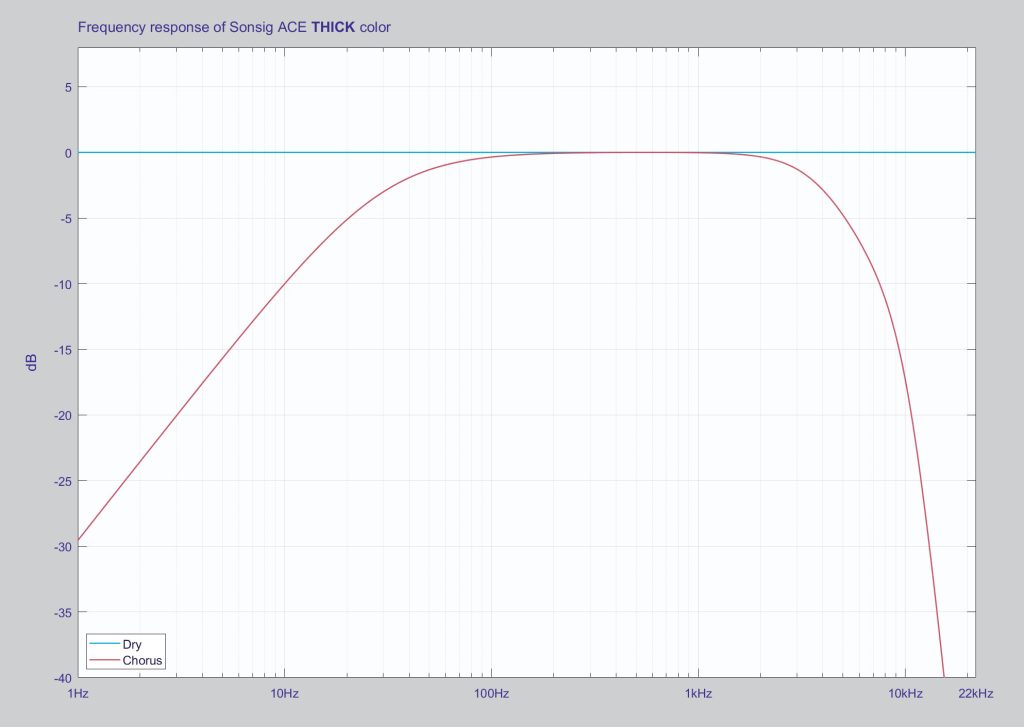
Thick
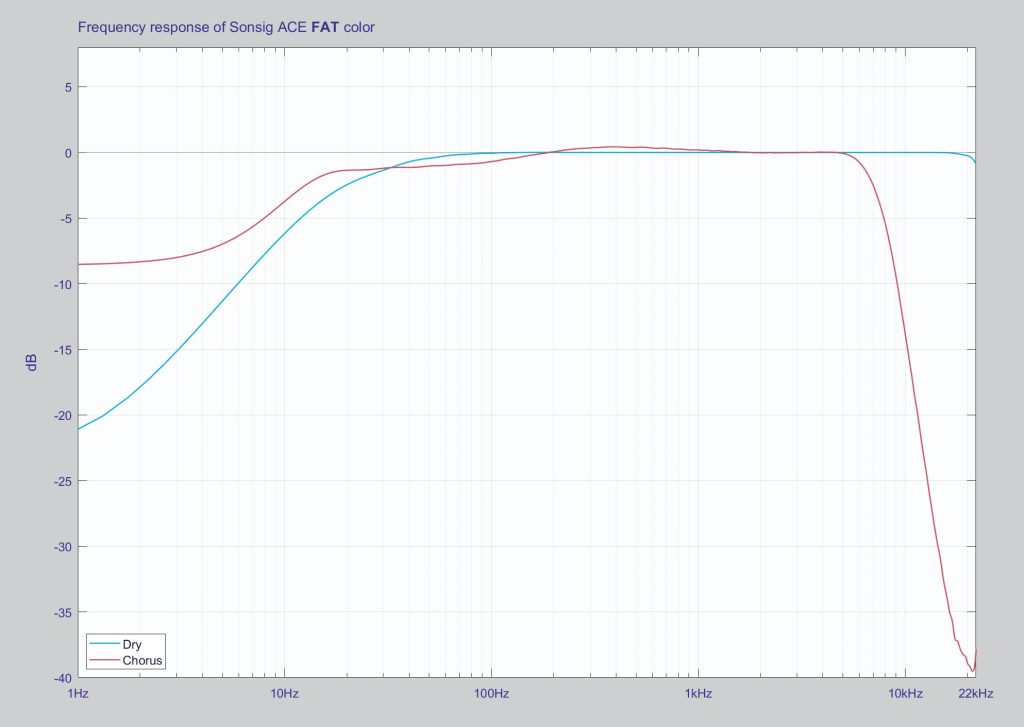
Fat
Adds richness by enhancing low and midrange frequencies.

Dark
Smooth low-pass filter for a mellow, vintage character.
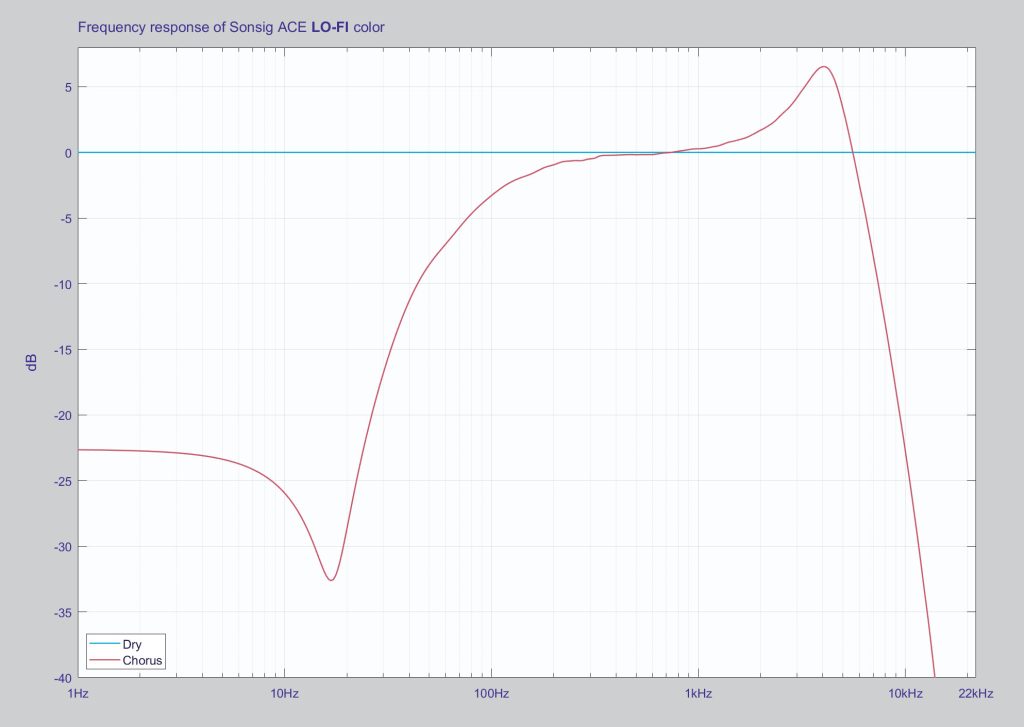
Lo-Fi
Reduced high frequencies with a resonant upper-midrange boost, simulating an aged, retro sound.

Edgy
Lo-fi character with added presence and detail in the higher frequencies.
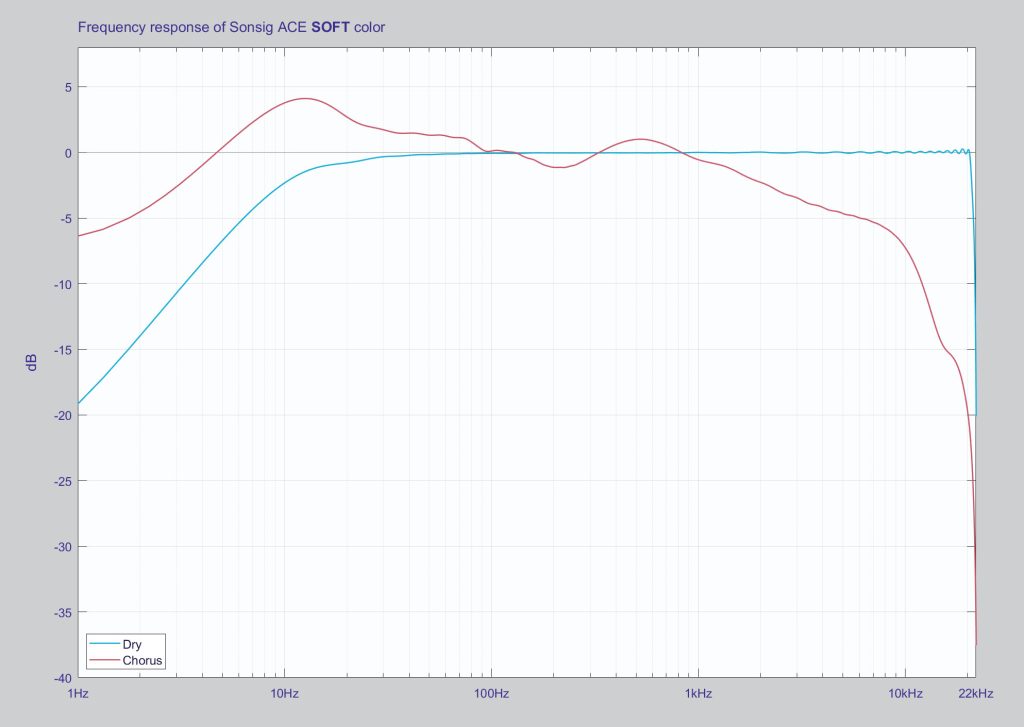
Soft
Gentle attenuation of high frequencies for a smoother, less pronounced top-end.

HD
Extended high-frequency range with a subtle high-mid boost for clarity and definition.
How does Color Control Work?
The ingenuity of the Color control is due to its unique positioning within Sonsig ACE’s signal processing. Unlike standard filters, Color directly influences the signal fed into the modulation engine.
The amount of modulation within specific frequency ranges can be tailored with precision. And this complex interaction directly impacts the phase response and overall spatial characteristics of the effect.
To give you a bit of an idea of what’s going on under the hood, we included the frequency response charts above. However, the true interplay between the unprocessed and processed signals is far more complex than anything we can show you in a simple graph.
How to Use the Color Control?
Explore the potential of Color to achieve your desired mix results:
- Add vintage warmth and depth: Consider the THICK and FAT modes.
- Tame harsh frequencies: Opt for DARK or SOFT settings.
- Enhance clarity and presence: Investigate the EDGY and HD modes.
- Create a Lo-Fi aesthetic: The LO-FI setting is your ideal starting point.
Refining the Mix Even Further With Low Cut and Vintage
Complementing the Color control are two additional tonal parameters to fine-tune your sound:
- Low Cut: This high-pass filter removes low frequencies from the wet signal (0-500Hz range), helping to tighten up the mix and prevent muddiness.
- Vintage: Engages classic hardware-style coloration to the dry signal. The specific character depends on the selected Color mode, offering added depth and warmth.
Listen and Discover
As always, it’s best to trust your ears and instincts, and experiment with different Color, Low Cut and Vintage settings to find the perfect fit for your mix.
The Color control offers a wide range of tonal control, allowing you to tweak the most subtle nuances, or shape dramatic, transformative changes in the sonic character of your tracks.


